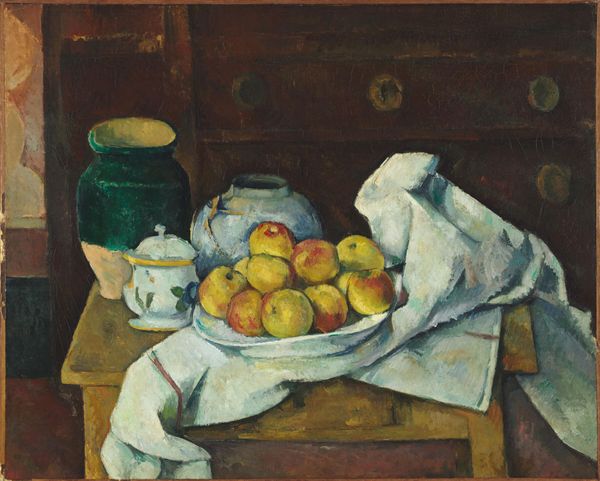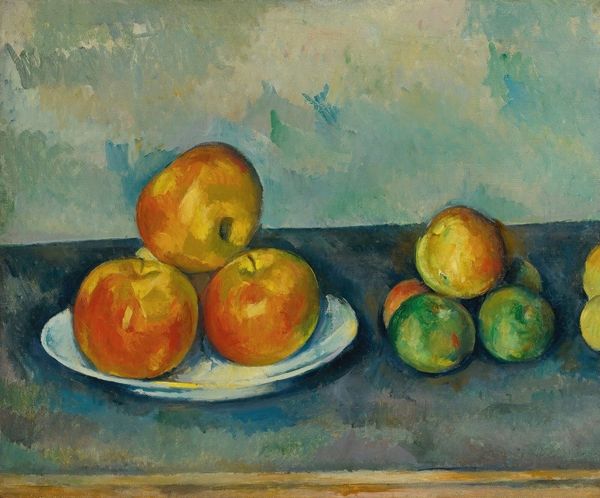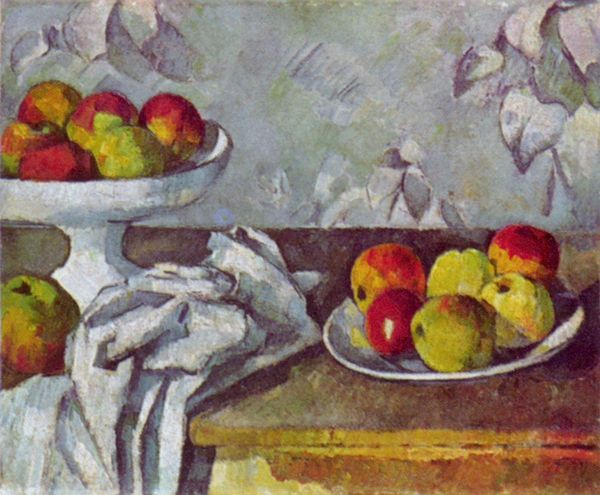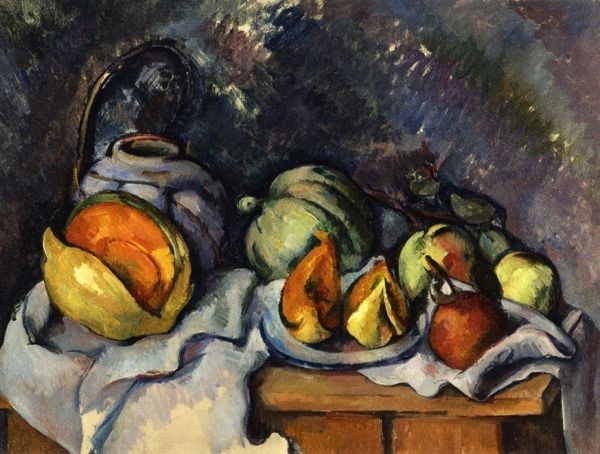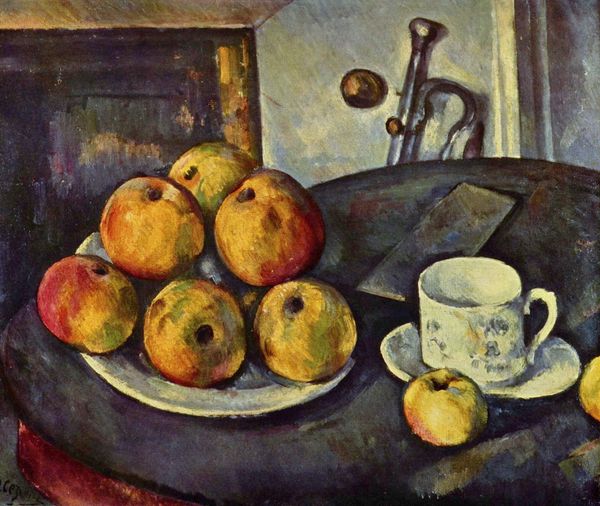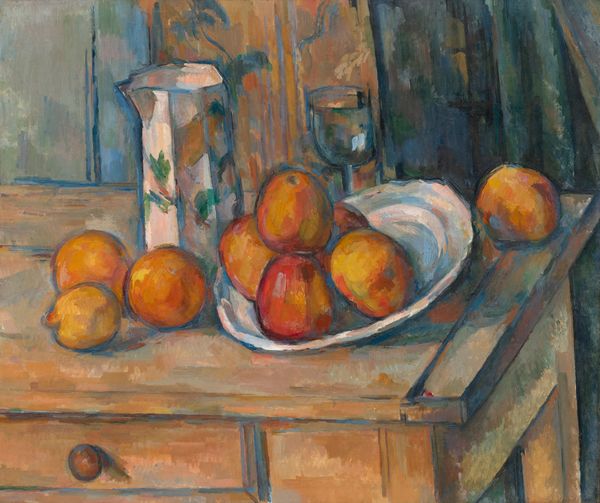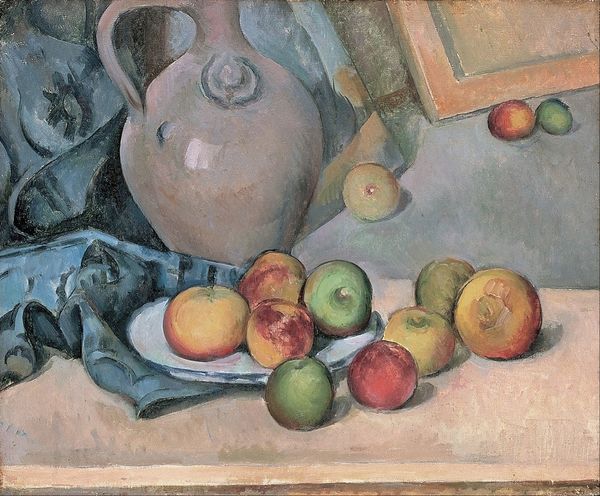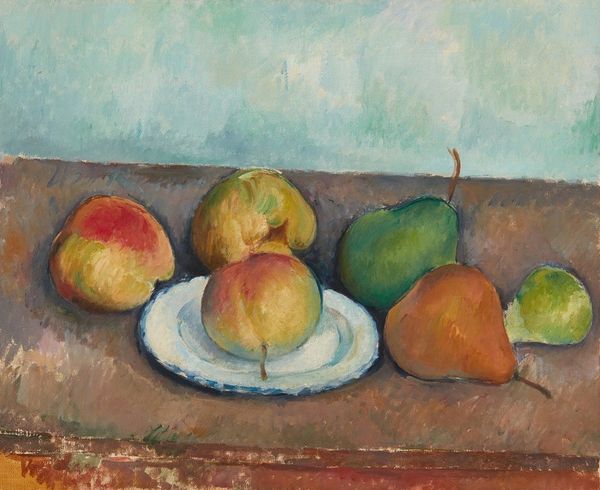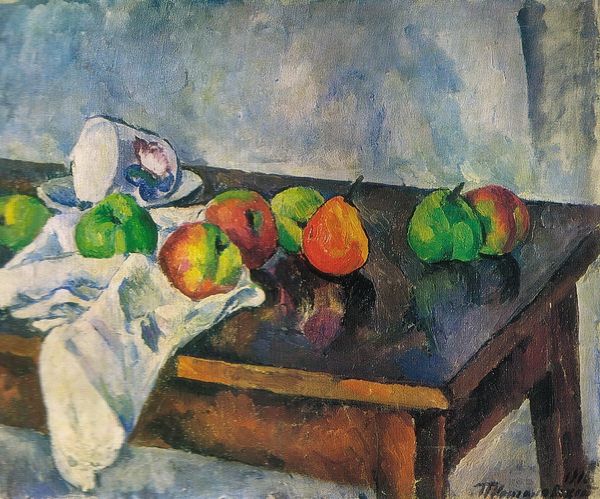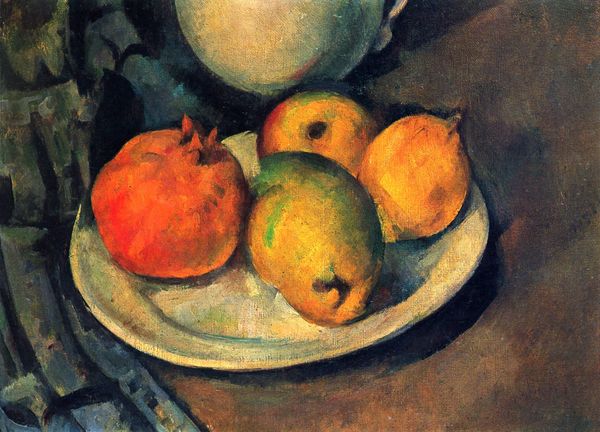
painting, oil-paint, canvas
#
painting
#
canvas painting
#
impressionism
#
oil-paint
#
oil painting
#
canvas
#
post-impressionism
Dimensions: 61 x 90 cm
Copyright: Public domain
Editor: Here we have Paul Cézanne’s “Still Life with Sugar,” painted in 1890, rendered in oil on canvas. It feels almost… unstable. The perspective seems skewed, but in a deliberate way. What do you make of it? Curator: Indeed. Observe how Cézanne manipulates form. Note the tilted perspective, as you mentioned. This deliberate distortion fractures our perception, challenging the conventional understanding of spatial relationships. He presents multiple viewpoints simultaneously, rather than adhering to a single, fixed perspective. Do you perceive how the artist has explored line, plane and volume to create a sense of dynamism and movement? Editor: It's almost as if he's building up the image brick by brick using colour and form, rather than trying to trick us into seeing a realistic scene. Curator: Precisely. The painting becomes an object in itself, divorced from mere representation. What do you notice about the relationship between the objects and the background? Editor: The background almost seems to push forward, flattening the space, but I also see some kind of saw. I have never seen anything like this! Curator: It's interesting you mention the background as well. The composition almost reduces everything to shapes and color. The objects and ground are unified by an aesthetic rhythm that invites us to consider formal organization. In the end, his interest is with structure of a painting, not an illustration of external reality. Editor: This was insightful! I understand now what you mean with planes and shapes. Thank you. Curator: A pleasure. I was thrilled by how Cézanne deconstructs reality to create a visual experience driven by structure.
Comments
No comments
Be the first to comment and join the conversation on the ultimate creative platform.
